What are lab grown diamond rings?
Key Takeaway:
- Lab grown diamond rings are diamonds that are created in a laboratory rather than mined from the earth. They have the same physical and chemical properties as natural diamonds, but are more affordable.
- Lab grown diamond rings offer various benefits, including affordability and a reduced environmental impact compared to mined diamonds. They are also available in a wide variety of designs and styles.
- The process of growing lab grown diamonds involves using special laboratory equipment to create the conditions necessary for diamond formation. This process results in diamonds that are chemically and physically indistinguishable from mined diamonds.
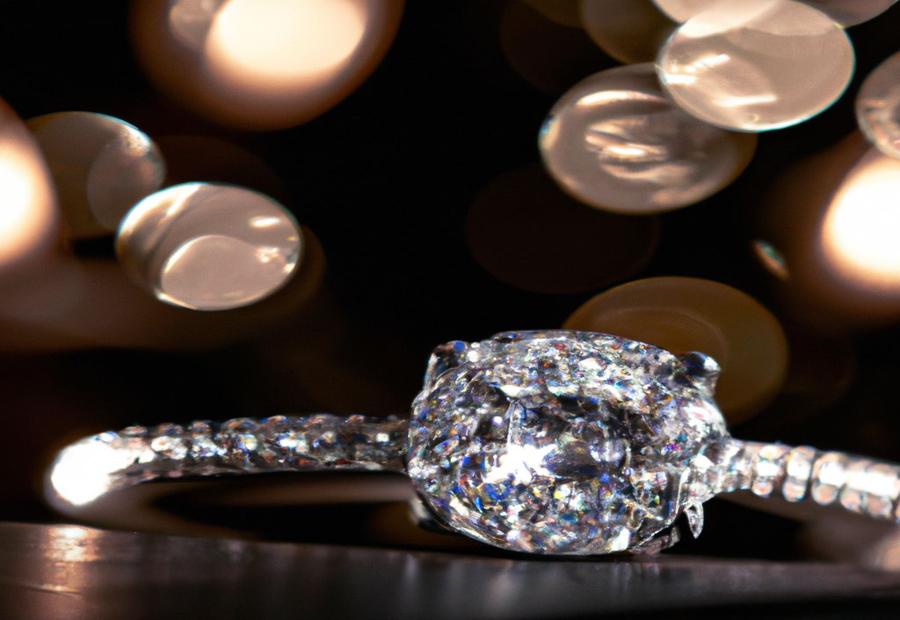
Photo Credits: Www.Lab-Grown-Diamond-Ring.Com by Gregory Rivera
Lab grown diamond rings have revolutionized the jewelry industry. From their definition to their significance, this article navigates the intriguing world of lab grown diamonds. Discover the process behind creating these exquisite gems and understand why lab grown diamond rings are gaining popularity among buyers worldwide. Get ready to be amazed by the brilliance and value of these sustainable alternatives to mined diamonds.
Definition of lab grown diamonds
Lab grown diamonds (also known as synthetic diamonds) are created in a lab using advanced tech and processes. They have the same chemical and physical properties as natural diamonds, making them indistinguishable to the eye. Lab grown diamond rings are engagement or wedding rings with lab-created diamonds as center or accent stones. They offer an affordable option compared to mined diamond rings, with the same beauty and sparkle.
Creating lab grown diamonds involves two methods: chemical vapor deposition (CVD) and high pressure high temperature (HPHT). In CVD, a small diamond seed is placed in a chamber of carbon-rich gases. Over time, these gases break down and carbon atoms attach to the seed, forming layers of diamond. HPHT mimics the intense heat and pressure conditions where natural diamonds form. A carbon source is subjected to extreme heat and pressure to create lab-grown diamonds.
Lab grown diamond rings have several advantages. They are more affordable due to their controlled manufacturing and abundant supply. Plus, they have a lower environmental impact, since no mining or extraction is required. This aligns with sustainable consumer choices and ethical considerations.
Ultimately, lab grown diamond rings offer affordability, style, and guilt-free bling. They provide high-quality diamonds without the environmental and ethical worries of mined diamonds.
Importance of lab grown diamond rings
Lab grown diamond rings have become important due to their affordability and sustainability. Identical to mined diamonds, these gems can’t be distinguished by the naked eye. They are created in controlled environments with advanced lab equipment, ensuring consistent quality and clarity.
Plus, lab grown diamond rings are available in a variety of styles, cuts, and sizes. Consumers can pick the one that meets their individual preferences without any compromise on quality or style.
Furthermore, prices of these rings have been gradually decreasing over the past few years. This is expected to continue in the future, making lab grown diamonds an attractive option for those seeking high-quality jewelry at competitive prices.
What are lab grown diamonds?
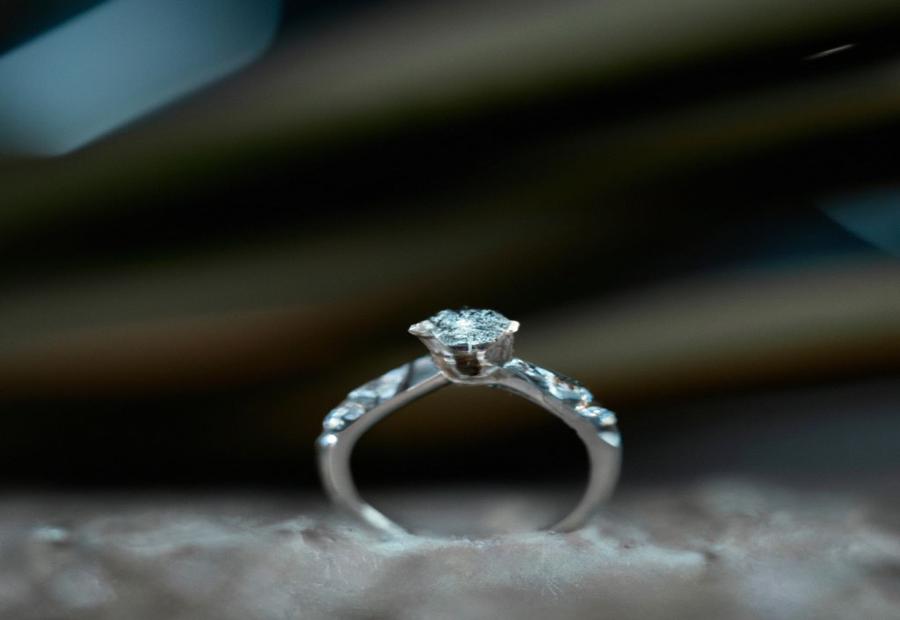
Photo Credits: Www.Lab-Grown-Diamond-Ring.Com by Noah Sanchez
Lab grown diamonds have revolutionized the jewelry industry, offering an alternative to natural diamonds. In this section, we will dive into the world of lab grown diamonds and explore their unique properties. From a comparison of physical properties to a breakdown of chemical properties, we will uncover the fascinating aspects of these sustainable and ethically sourced gems. Get ready to discover the brilliance and beauty of lab grown diamonds.
Physical property comparison chart
Physical properties are characteristics which can be seen or measured without changing their chemical structure. A physical property comparison chart is used to compare lab grown diamonds to mined diamonds. This chart lists various physical properties, such as hardness, thermal conductivity and refractive index. This allows for an objective assessment of lab grown diamonds’ quality and performance.
To show this info clearly, a table should be created. The table will have several columns for different physical properties. Each column will hold data comparing lab grown and mined diamonds in terms of these properties.
It’s important to note that lab grown diamonds have consistent purity due to controlled growth, meaning fewer impurities than natural ones. Their chemical compositions are the same, making them indistinguishable in most cases. This means lab grown diamond rings shine just as brightly as mined ones.
When choosing a lab grown diamond ring it’s important to:
- Look carefully at the physical property comparison chart and see which properties matter to you; and
- Consult with experts or jewelers who specialize in lab grown diamonds for advice.
Overall, understanding the physical properties helps make an informed decision when buying lab grown diamonds. Consider your preferences and get expert advice when needed. This way you’ll get a high-quality lab grown diamond ring that looks great and is ethically sourced.
Chemical property comparison chart
Lab grown diamonds are synthetic diamonds made in a lab, not found in the ground. They have similar chemical makeup to natural diamonds, so they’re a great alternative for jewelry seekers.
A table of chemical features can show the similarities and differences between the two types of diamonds. The columns could include: crystal structure, composition, and impurities. This would help people understand the chemical differences.
Lab grown diamonds have advantages, too. They’re often more eco-friendly, since they don’t need mining. Plus, they’re more affordable than mined diamonds, so people can buy diamond rings without breaking the bank.
Lab grown diamond rings: save money, look great, and help the planet.
Benefits of lab grown diamond rings
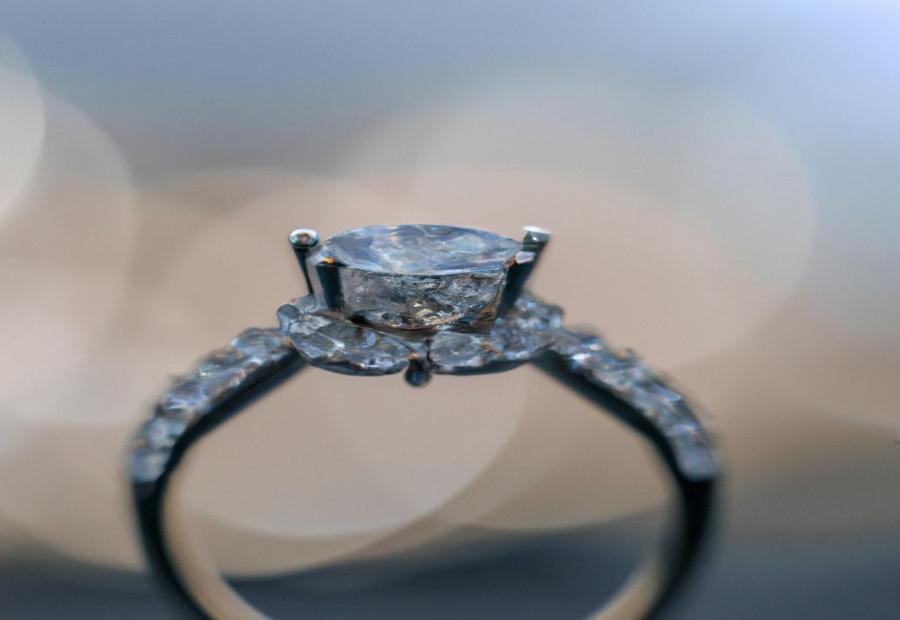
Photo Credits: Www.Lab-Grown-Diamond-Ring.Com by Jack Perez
Lab grown diamond rings offer a range of benefits worth exploring. From increased affordability to reduced environmental impact, these rings bring significant advantages to the table. Discover how lab grown diamond rings are both budget-friendly and environmentally conscious, making them a compelling choice for those seeking a beautiful and sustainable symbol of love and commitment.
Affordability of lab grown diamond rings
Lab grown diamond rings offer an affordable choice compared to mined diamonds. They have the same chemical and physical traits as real diamonds. Lab diamonds are made using a process that mimics nature, resulting in diamonds which are equal in quality and beauty. The affordability of lab grown diamond rings makes them attractive to buyers seeking a lower priced diamond ring.
Mined diamonds can be costly due to rarity and mining costs. However, lab grown diamonds are usually cheaper because they do not require mining operations. This allows manufacturers to provide lab diamonds at a lower cost without compromising on quality or beauty.
Lab grown diamond rings also help the environment. Traditional diamond mining can have serious environmental effects like destruction of habitats and water contamination. In contrast, making lab diamonds has little ecological impact. No new mining is necessary, preserving nature. Plus, the energy used in the process can come from renewable sources, lowering the carbon footprint of lab grown diamonds.
Sarah’s story is a great example of the affordability of lab grown diamonds. She had always wanted an engagement ring but couldn’t afford one. But then she found out about lab diamonds and was able to buy her dream ring without breaking the bank. Plus, she was proud knowing her ring was both stunning and environmentally friendly. Sarah’s story shows how lab grown diamond rings provide a cost-effective and sustainable choice for individuals who desire quality diamonds at a lower price.
Environmental impact of lab grown diamond rings
Lab grown diamond rings are a more eco-friendly option, as they don’t require mining and its associated land excavation. This reduces water usage and eliminates pollutants. Plus, these rings have a lower carbon footprint compared to mined diamonds. They also conserve natural resources, plus avoid conflict minerals and reduce waste.
In addition, lab grown diamond rings promote responsible practices in the industry. This is due to increasing consumer demand for sustainable and ethically sourced products.
It’s worth noting that lab grown diamonds have been around since the 1950s. Technology and research have enabled their production, making them virtually indistinguishable from natural diamonds. This highlights continuous development of lab grown diamond manufacturing processes.
Creating lab grown diamonds is not a science experiment gone wrong, but a combination of technology and nature’s brilliance.
How lab grown diamonds are made
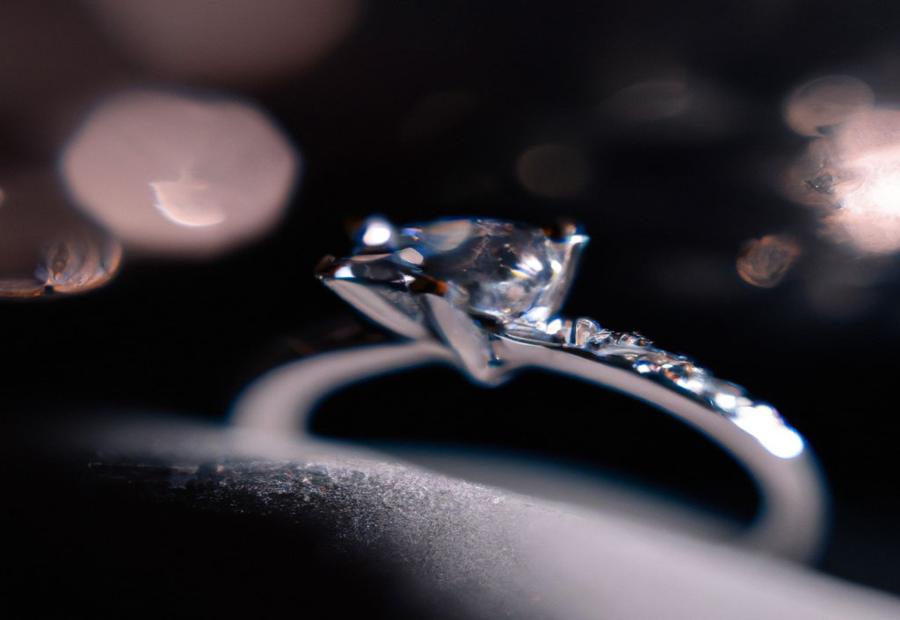
Photo Credits: Www.Lab-Grown-Diamond-Ring.Com by Dylan Baker
Lab grown diamonds have revolutionized the jewelry industry, offering a sustainable and affordable alternative to traditional mined diamonds. In this section, we will explore the fascinating process behind how lab grown diamonds are made. From the intricate techniques used to cultivate these gems to the specialized laboratory equipment involved, we’ll uncover the intriguing world of lab grown diamonds and the science behind their creation. Get ready to unravel the secrets of this innovative approach to diamond production.
Process of growing lab grown diamonds
Lab-grown diamonds are created using a process that replicates the natural conditions in which diamonds form. It starts with a small diamond seed in a growth chamber. The chamber is filled with gases like methane and hydrogen, heated to extreme temperatures. Carbon atoms break apart and deposit onto the seed, increasing the size of the diamond. This could take weeks or months.
Once the desired size is reached, it is removed and cut and polished, just like a mined diamond. These diamonds have the same physical and chemical properties as mined diamonds but are more affordable and have a lower environmental impact.
The process of growing lab-grown diamonds has transformed the jewelry market. More people are aware of its benefits and demand for them is increasing. Don’t miss out on a stunning and ethically-produced diamond ring that won’t break the bank!
Use of special laboratory equipment
Lab grown diamonds, also termed synthetic diamonds, come into being through a process that requires special lab equipment. This is critical in the growth process, as it provides the correct conditions for diamonds to form. Without the use of this equipment, it would be impossible to create lab grown diamonds with the same standard as natural diamonds.
The equipment guarantees all necessary elements, such as temperature, pressure, and chemical composition are supervised to favor the growth of these amazing diamonds. Therefore, the use of special laboratory equipment is vital for the production of lab grown diamonds.
Lab grown diamond rings in the market
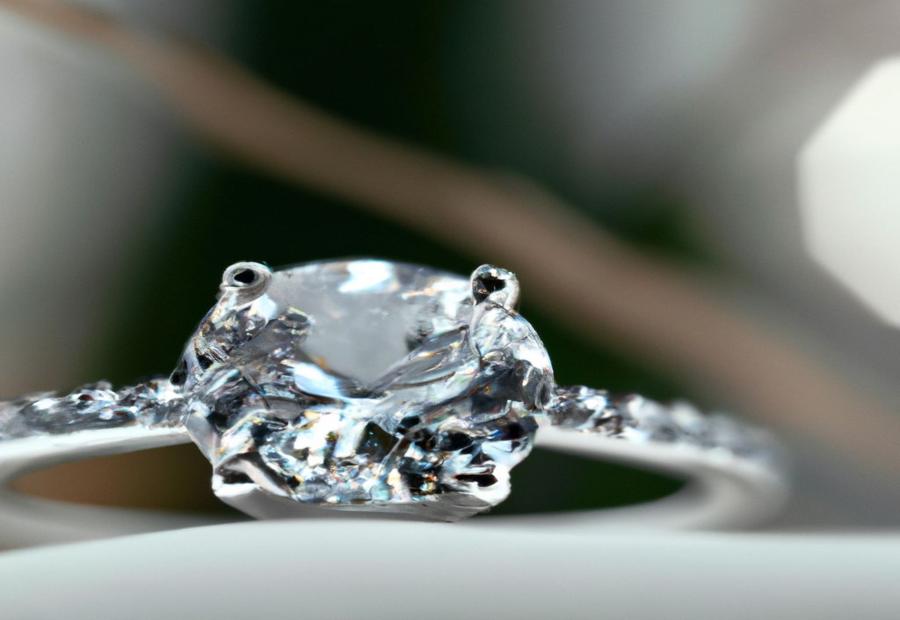
Photo Credits: Www.Lab-Grown-Diamond-Ring.Com by Jonathan Green
Lab grown diamond rings have gained increasing popularity in the market. Discover the wide availability and variety of these ethical and affordable alternatives compared to their mined counterparts. We’ll also delve into the comparison between lab grown and mined diamond rings, offering insights into their characteristics and value. Get ready to explore the thriving market of lab grown diamond rings and make an informed choice for your next piece of jewelry.
Availability and variety of lab grown diamond rings
Lab-grown diamond rings are a great choice for those looking for variety and availability. They come in various designs, such as solitaire rings, halo rings, three-stone rings, and eternity bands. Plus, they come in different cuts, such as round brilliant, princess cut, cushion cut, emerald cut, and oval cut. Colors range from white (colorless or near-colorless), yellow, pink, blue, and green. Carat size options are tailored to personal preferences and budgets. These diamonds can even be customized with personal specifications and style preferences. On top of that, lab grown diamonds are ethically sourced, as mining practices are not involved.
Moreover, these diamonds are easily traceable due to their production in a controlled laboratory setting, providing customers with assurance of the authenticity and quality of their purchase. In addition, lab grown diamonds are more affordable compared to mined diamonds, while still maintaining the same level of beauty and brilliance. This makes them an attractive option for individuals who want quality jewelry without a hefty price tag.
It’s important to note that lab grown diamond rings are distinct from mined diamond rings. Therefore, it’s essential to consider the differences between the two when making a purchase.
Comparison between lab grown and mined diamond rings
Lab grown diamonds and mined diamonds have distinct differences in aspects such as physical and chemical properties, affordability, environmental impact, availability and variety. To compare, let’s look at a chart:
| Aspect | Lab Grown Diamonds | Mined Diamonds |
| Physical Properties | Identical to natural diamonds. | Natural variations due to geological factors. |
| Chemical Properties | Pure carbon crystal structure. | Pure carbon crystal structure with minor impurities. |
| Affordability | Cost way less. | Higher cost due to rarity and mining. |
| Environmental Impact | Lower impact than mining. |
Moreover, lab grown diamond rings have unique features. For instance, they offer more color options as they can be synthetically produced. Plus, they are free from any ethical concerns related to mining. Thus, many people who prioritize ethical consumerism prefer them.
Price trends and future predictions
Lab grown diamond rings have been gaining popularity for their unique advantages over natural diamonds. In this section, we will delve into the exciting world of price trends and future predictions for lab grown diamond rings. Discover the current price trends that make them an attractive option, and explore the fascinating predictions that experts have made for the future of this growing market. Get ready to uncover the insights and forecasts that shape the pricing landscape of lab grown diamond rings.
Current price trends of lab grown diamond rings
The pricing of lab grown diamond rings is rising, meaning more people want them. Compared to mined diamonds, lab grown diamonds give a cheaper option without losing quality or beauty. These lab made gems are wanted by buyers who want quality jewellery at a good cost.
To understand the current trends for lab grown diamond ring prices, here are the most important factors:
| Diamond Type | Price Range | Factors Affecting Price |
|---|---|---|
| Lab Grown Diamonds | Lower range | Synthetic production, availability |
| Mined Diamonds | Higher range | Rarity, natural formation |
Lab grown diamonds usually have a lower price than mined diamonds. This is because of the synthetic production process. This allows more control and makes them available more easily. On the contrary, mined diamonds are rare and formed naturally over millions of years. This makes them more expensive.
Although lab grown diamonds are cheaper, they have the same physical and chemical properties as mined diamonds. This means consumers can have a beautiful and durable diamond ring without spending a lot.
Future predictions for lab grown diamond rings
Lab grown diamond rings have a promising future! Advancing technology is leading to more production and affordability. Consumers are becoming aware of the environmental impacts of mined diamonds, so demand for lab grown diamond rings is growing.
The variety of lab grown diamond rings is also expanding. Manufacturers are developing better processes, leading to higher quality and more options. Plus, new lab equipment is allowing for faster production and turnaround times.
A bonus of lab grown diamond rings is they don’t fluctuate in price like mined diamonds. Price stability makes them a reliable investment.
When buying a lab grown diamond ring, research reputable manufacturers and retailers who follow ethical practices. This way you can get a quality product that aligns with your values.
Conclusion
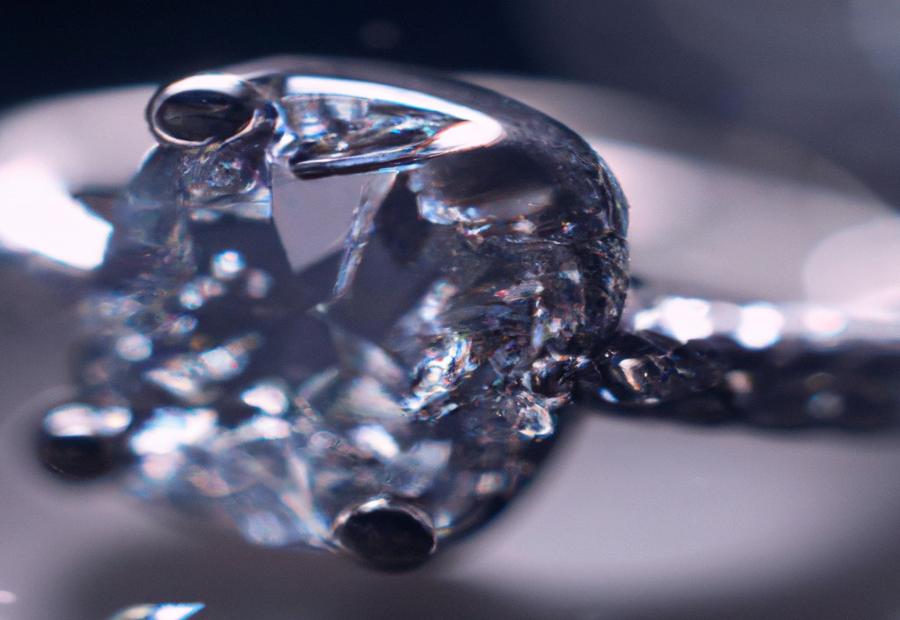
Photo Credits: Www.Lab-Grown-Diamond-Ring.Com by Joseph Young
Lab-grown diamond rings are a trending fashion in the jewelry world. Crafted in a laboratory, these diamonds possess identical chemical and physical traits to their mined counterparts. Plus, they’re more affordable and have a smaller environmental impact.
Lab-grown diamonds provide an ethical and sustainable alternative to traditional diamond rings. To make them, a carbon seed is placed under high pressure and temperature conditions, mirroring the natural diamond formation process. This results in diamonds that are optically and chemically identical.
Moreover, customers can choose their desired color and clarity, allowing them to find diamond rings that fit their budget and preference. Plus, the gems are certified by reliable gemological labs, certifying their authenticity and quality.
All in all, lab-grown diamond rings offer a one-of-a-kind, ethical, and affordable option in the jewelry market.
Some Facts About Lab Grown Diamond Rings:
- ✅ Lab grown diamonds are real diamonds that are grown from a mined diamond “seed” using advanced technology. (Source: Team Research)
- ✅ They have the same physical and chemical properties as mined diamonds and can only be distinguished using special laboratory equipment. (Source: Team Research)
- ✅ Lab grown diamonds come with a quality certificate, just like mined diamonds, and can have slight color differences or imperfections that affect their price. (Source: Team Research)
- ✅ Lab grown diamonds are ethical and sustainable, as their production protects the environment and avoids conflicts associated with mining. (Source: Team Research)
- ✅ Lab grown diamonds are becoming more readily available and can offer savings of up to 50% compared to natural diamonds. (Source: Team Research)
FAQs about What Are Lab Grown Diamond Rings?
What are lab grown diamond rings?
Lab grown diamond rings are rings that feature diamonds created through a man-made process using advanced technology. These diamonds have the same physical and chemical properties as mined diamonds and can only be distinguished using special laboratory equipment. They come with a quality certificate, just like mined diamonds, and can have slight color differences or imperfections that affect their price.
What is the resale value of lab grown diamond rings?
Lab grown diamond rings do not have a resale value, unlike natural diamonds. Natural diamonds can retain about 50% of their value after purchase and historically have seen price increases. However, the value of lab grown diamonds may decrease over time, making them less desirable for those concerned about resale value.
Where can I buy lab grown diamond rings?
You can buy lab grown diamond rings from various retailers, including The Diamond Store, James Allen, and Blue Nile. These retailers offer a wide range of lab-created diamonds at different price points, providing a unique opportunity for individuals looking for more affordable options.
Do lab grown diamond rings have the same characteristics as natural diamonds?
Yes, lab grown diamond rings have the same characteristics as natural diamonds. They are chemically and optically identical, making it difficult to distinguish between the two without specialized equipment. Lab grown diamonds have a lattice crystal structure, similar to natural diamonds, and can exhibit various colors and clarities.
Are lab grown diamond rings ethical and sustainable?
Yes, lab grown diamond rings are considered ethical and sustainable. Their production process protects the environment and avoids conflicts associated with traditional diamond mining. As a result, they offer a more environmentally friendly alternative for those concerned about the impact of their purchase.
Why are lab grown diamond rings a more affordable option?
Lab grown diamond rings are a more affordable option compared to natural diamonds due to several factors. The prices of lab grown diamonds have significantly dropped in the past year, while natural diamond prices have slightly increased. Lab grown diamonds have also seen a decline in prices over the past two years, similar to what happened with lab-created emeralds in the 1990s. Increased competition and oversupply have contributed to this price reduction, along with economies of scale in the production process.

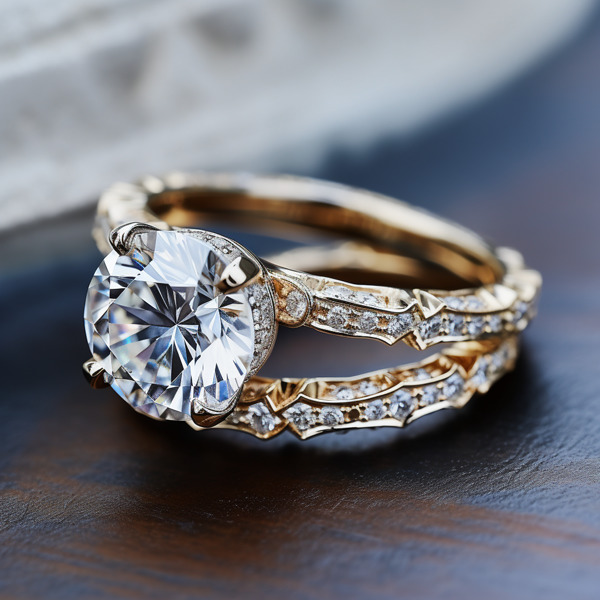

Leave a Reply